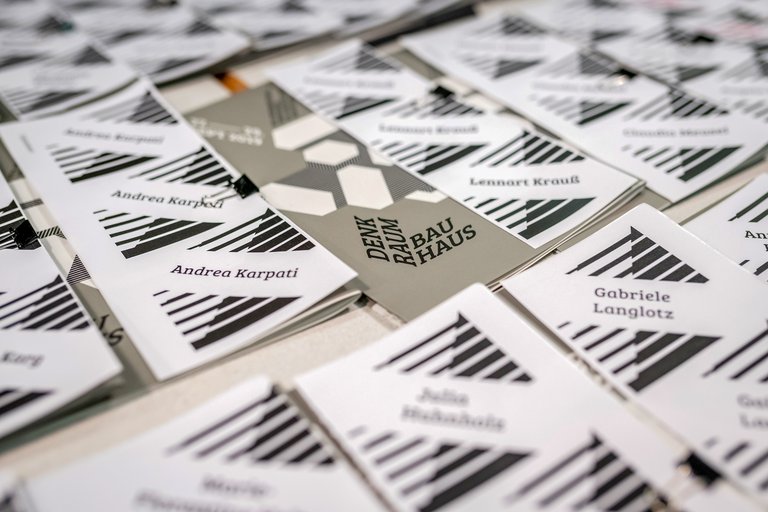The 6th International Symposium on Architectural Education (organised by the Chair of Building Morphology, Prof. Bernd Rudolf, Faculty of Architecture and Urbanism, and the Chair of Art and Didactics, Faculty of Art and Design, Prof. Dr. Andrea Dreyer, at the Bauhaus-Universität Weimar), and the Federal Congress of Art Education BUKO 2019 were both concluded in the Audimax on Sunday.
»Denkraum.Bauhaus« – Outstanding Resonance Chamber
Hartmut Rosa's explanations of a resonant world relationship were preceded by a total of 29 keynote speeches, introductory presentations and workshops at original and contemporary Bauhaus locations in Weimar. The invitation of the organisers Dr. Luise Nerlich, Faculty of Architecture and Urbanism, and Prof. Dr. Andrea Dreyer, Faculty of Art and Design, was followed by 60 speakers, 17 of whom were colleagues from the Bauhaus-Universität Weimar. Combined with an insight into the current teaching and research areas, the interdisciplinary projects and the socially relevant discourse, they were able to present the Bauhaus-Universität Weimar as a responsible and forward-looking institution in the face of the challenges of our time.
Whether on stage, in the Bauhaus Museum, in original Bauhaus locations or in the premises of the Bauhaus-Universität Weimar – the relevance of the Bauhaus ideas for contemporary aesthetic education at universities, schools and in extracurricular cultural educational institutions was discussed during every day of the congress. It was discussed which role universities, art classes and extracurricular educational institutions play as meeting places for the issues and problems of our time as well as the demand for a cross-disciplinary discourse between art, design, architecture and learning.
At Denkraum.Bauhaus, the participants experienced original locations where the Bauhaus residents taught and studied 100 years ago. These are locations which may not appear very »Bauhaus« at first glance– such as Tempelherrenhaus in Park an der Ilm, or Reithaus where Johannes Itten's preliminary course took place 100 years ago. However, the programme also took place in the conceptual spaces in which the Bauhaus is taught and learned today, such as the wood and plaster workshops, the digital LABS of the media or the drawing rooms of architects.
Here, people who are committed to the important task of art and architectural education come together to talk about strategies that arouse interest in architecture and the built environment and to experience the Bauhaus culture within the context of its own time and social and political developments as a catalyst for contemporary aesthetic education.
